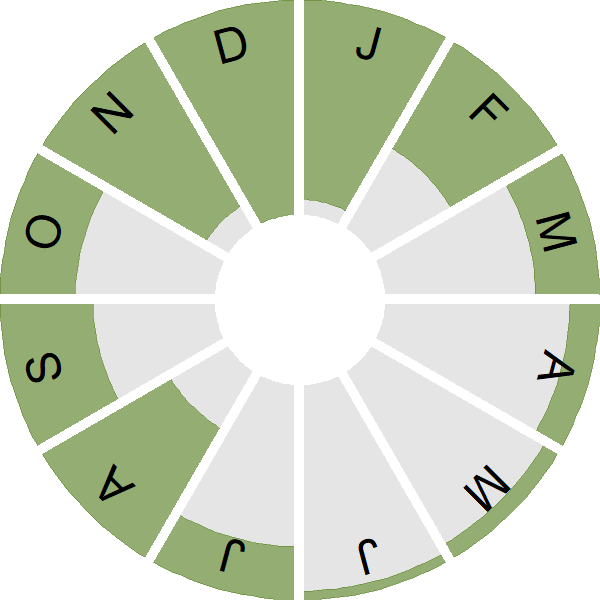Caspian Gull

Introduction
The Caspian Gull is a fairly recent addition to the British avifauna, arriving in small numbers in late summer and autumn to spend the winter with us.
The nearest breeding range is around the Black and Caspian Seas; the species has been spreading north and west, which accounts for its presence in some British gull flocks in recent years. It is likely that advances in bird identification have enabled a more accurate recognition of the numbers of this species in Britain.
Adults are very smart white-headed gulls with a long, drawn-out pale bill and long wings.

Key Stats
Identification
Songs and Calls
Song:
Alarm call:
Other:
Status and Trends
Conservation Status
Population Size
Population Change
Caspian Gull was only separated from Herring Gull and given full species status in 2007 [Sangster et al. 2007]. The species is predominantly seen in the UK in the autumn and winter and is most numerous in central and southern England, with few records from northern England or Scotland [Gibbins et al. 2010]. Although the number of records in the UK has increased in line with the expansion of the species' breeding colonies in Europe to as far west as the Netherlands [Litwiniak et al. 2021], wintering numbers in the UK are still relatively small [Frost et al. 2019].
Distribution
There is a distinct arrival of Caspian Gulls in late summer and early autumn into Britain, mainly to the southeast and east coast, with birds then moving inland and dispersing north and west as the autumn and winter progress. Numbers peak in winter and Caspian Gulls were reported from 169 10-km squares, mostly in southern and central England.
Occupied 10-km squares in UK
2007/08–10/11
or view it on Bird Atlas Mapstore.
2008–11
or view it on Bird Atlas Mapstore.
Distribution Change
from 1981–84 to 2007–11
or view it on Bird Atlas Mapstore.
Seasonality
Caspian Gulls can be recorded year-round and are most evident in late summer when there is an influx of post-breeding adults and juveniles.
Weekly pattern of occurrence
The graph shows when the species is present in the UK, with taller bars indicating a higher likelihood of encountering the species in appropriate regions and habitats.

Movement
Britain & Ireland movement
Foreign locations of birds ringed or recovered in Britain & Ireland
Dots show the foreign destinations of birds ringed in Britain & Ireland, and the origins of birds ringed overseas that were subsequently recaptured, resighted or found dead in Britain & Ireland. Dot colours indicate the time of year that the species was present at the location.
- Winter (Nov-Feb)
- Spring (Mar-Apr)
- Summer (May-Jul)
- Autumn (Aug-Oct)

Biology
Survival and Longevity
Survival is shown as the proportion of birds surviving from one year to the next and is derived from bird ringing data. It can also be used to estimate how long birds typically live.
View number ringed each year in the Online Ringing Report.
Lifespan
Classification, names and codes
Classification and Codes
- Order: Charadriiformes
- Family: Laridae
- Scientific name: Larus cachinnans
- Authority: Pallas, 1811
- BTO 2-letter code: YC
- BTO 5-letter code: CASGU
- Euring code number: 5927
Alternate species names
- Catalan: gavià del Caspi
- Czech: racek belohlavý
- Danish: Kaspisk Måge
- Dutch: Pontische Meeuw
- Estonian: koldjalg-hõbekajakas
- Finnish: aroharmaalokki (valkopäälokki)
- French: Goéland pontique
- German: Steppenmöwe
- Hungarian: sztyeppi sirály
- Icelandic: Klapparmáfur
- Italian: Gabbiano reale pontico
- Latvian: Kaspijas kaija
- Lithuanian: kaspijinis kiras
- Norwegian: Kaspimåke
- Polish: mewa bialoglowa
- Portuguese: gaivota-do-cáspio
- Slovak: cajka bielohlavá
- Slovenian: rumenonogi galeb
- Spanish: Gaviota del Caspio
- Swedish: kaspisk trut
- Welsh: Gwylan Bontaidd
More Evidence
More evidence from Conservation Evidence.com
Partners
Citing BirdFacts
If you wish to cite particular content in this page (e.g. a specific value) it is best to use the original sources as linked in the page. For a more general citation of the whole page please use: BTO (20XX) BirdFacts Species: profiles of birds occurring in the United Kingdom. BTO, Thetford (www.bto.org/birdfacts, accessed on xx/xx/xxxx).

